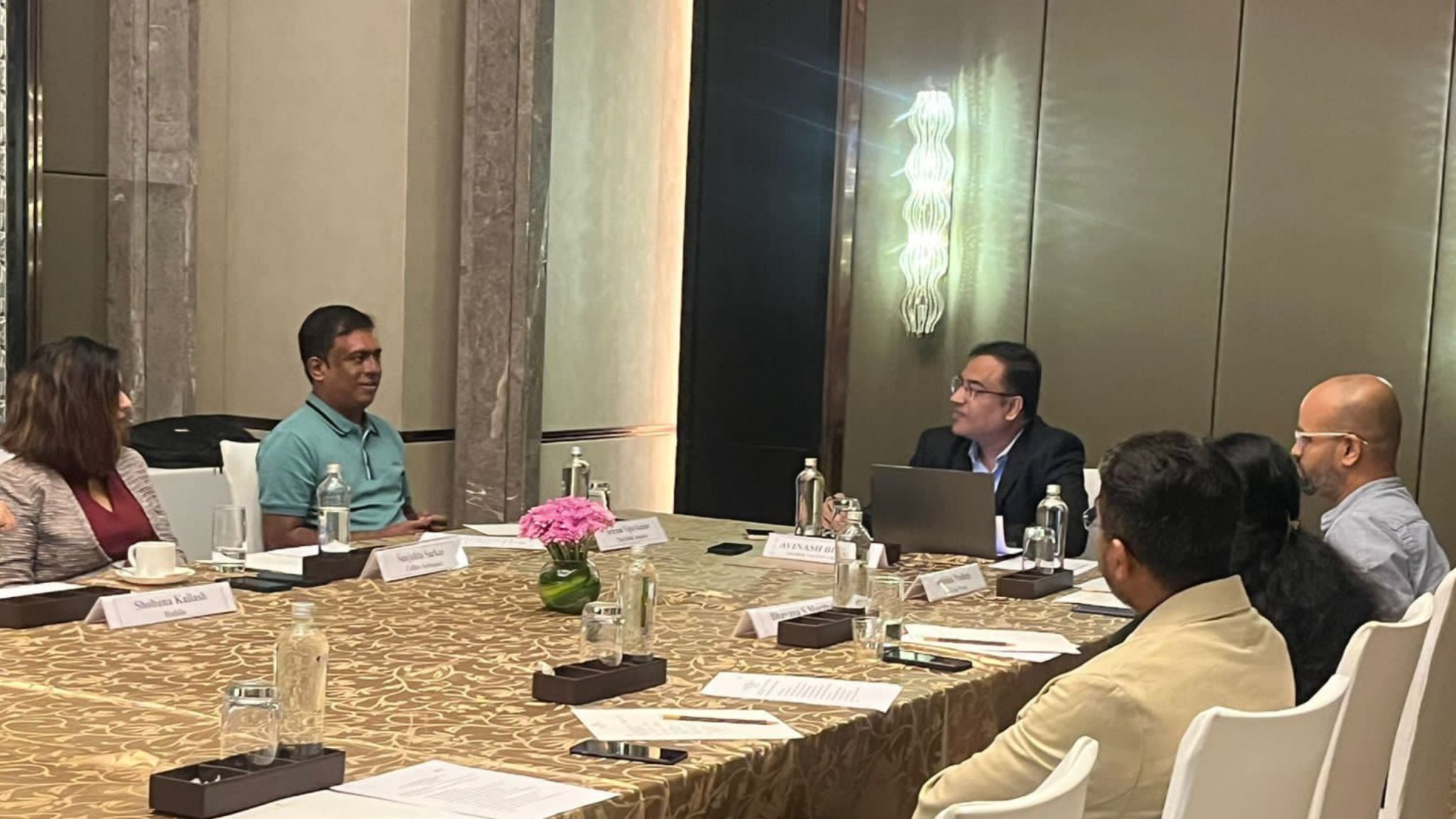The modern workplace is in a state of flux. The rapid evolution of technology, globalization, shifting demographics, and economic uncertainty have combined to create an environment that is fluid and unpredictable. The traditional route of reporting to the office for a typical 9-5 workday is a thing of the past. The post-Covid world has introduced an array of choices, forcing organizations and leaders to navigate a thin line between maintaining stability within their teams while displaying the flexibility demanded by today’s workforce.
Successful change requires understanding the trends that are shaping the future of work, such as the rise of gig work, hybrid work models, soft skills, agile teams, and niche skills, and evaluating how they can be integrated into your organization. These trends hold the key to enhancing the environment you have created and will enable your company to thrive in the years ahead.
Organizations must embrace the dynamic nature of the workplace and recognize that the days of a one-size-fits-all approach to work are long gone. They must foster an environment that can adapt to the needs of their workforce while maintaining a competitive edge in a global market. Leaders must be forward-thinking, anticipating change and adjusting their strategies accordingly.
Opportunities and challenges often go hand-in-hand. If the ongoing and past disruption has taught us anything, it’s that we must continuously learn, adapt, and remain resilient in the face of adversities. Only then can we truly hope to build a stable workforce that can enable us to achieve the ultimate goal of sustainable progress and profitability.
To find the answers to some of the most burning questions facing the industry today, Global Talent Exchange organized an in-person breakfast meetup to bring like-minded experienced leaders together to network, communicate, collaborate, and highlight valuable ideas and perspectives that can change the trajectory for the better.
The discussion was moderated by Avinash Bichali, Co-Founder at GTX.
We were joined by 5 visionaries in the space:
- Abhishek Pradeep- TA Leader at GE Gas Power, India Technology Center
- Bhavana S Murthy- Senior Manager Talent Acquisition at Visa
- Sriram Vijaykumar- Head of Talent Acquisition at TheMathCompany
- Sanjukta Sarkar- Director - HR, Global Engineering Centres (India, Poland, Puerto Rico) and India Country Head at Collins Aerospace
- Shobana Kailash- Group CHRO at Hubilo
While the session was a closed-door one, we wish to build a community that benefits from the widespread knowledge of these leaders. Here’s a rundown of what was discussed.
Avinash kick-started the decision by pointing out how the scenario has evolved so rapidly within just a year. 2022 was defined by rampant hiring and multiple resignations, leaving leaders in a state of flux. However, within months, the narrative changed. Several major organizations announced layoffs by hundreds and thousands.
The panelists began with an opening note to set the tone of the discussion and provide a sneak peek into how their organization is dealing with these changes. The consensus was that everyone is still adapting to a post-covid world. While once a candidate would prioritize the company name or the “brand”, they are now seeking stability and want to know more about what the place can offer them.
Organizations are getting used to remote ways of working and how, despite having teams that stretch across a country a massive as India, can they continue active collaboration and communication for maximum efficiency. The panelists agreed that last year was a bloodbath and the situation was not in favor of the employers. However, the market is correcting now and the balance is being restored. The situation, whenever as extreme as it has been lately, doesn’t usually continue for too long.
A leader pointed out that there is an urgent need for organizations- irrespective of size- to relook at how their funds are being utilized and managed, as not doing so ultimately leads to knee-jerk reactions such as mass layoffs. Panelists mentioned that it’s now time to hire with a razor-sharp focus and define needs very stringently.
What can we, as professionals, learn from the disruption in 2022? Is it possible to predict how long the situation is likely to remain like this?
The panelists mentioned that the recent disruptions have made it clear just how important it is to invest in talent, retention measures, and build future skills. The trend is unlikely to reverse on its own- there have to be active steps taken to make it happen.
A leader pointed out that they’ve observed that talent now wants to come back, perhaps with a hint of regret for marching out when offered the slightest increase in remuneration. The talent war is not as fierce as it was till recently- in 2022, candidates were shopping for offers and had multiple opportunities in hand; this isn’t happening anymore.
One panelist pointed out the importance of maintaining and nurturing the candidate ecosystem to keep it intact. It is influenced by the impression of the organization in the market, keeping positive relations alive with ex-employees, spreading the message about what the organization has to offer, good leadership, and also displaying what a candidate’s future career can look like.
It was drawn out how the Great Attrition hit small and medium-sized companies hard, as they neither have the reach nor influence to continue attracting talent. In the present time, startups need to be more careful about how they utilize their funds and make expectations clear from the start.
Talking about the mass layoffs taking place recently, the leaders were of the opinion that this is more of a course correction or cleansing rather than an actual financial crisis.
Whether this situation will continue or not and for how long- at present, the market is highly unpredictable and it is difficult to foresee when matters will settle. The ones at the helm should continue to wing it and deal with opportunities and challenges as they roll by.
How can leaders define and communicate a compelling EVP? What is offered to the candidates that makes them want to work with one organization over another?
The panelists agreed that there is a need to focus on both the monetary and non-monetary aspects of a job role while reaching out to candidates. During the talent war, several organizations hiked the compensation that was offered while others felt that that would not be the best course of action for them, and so they stuck to predetermined payscales but focused on other aspects more.
Leaders pointed out succession pipelines (growth within the organization), increased visibility, global projects, and exposure as some of the key elements that seemed to attract talent. Professionals also wanted to feel a sense of comfort and stability in the workplace, one that is resilient to economic turmoil and rapid market fluctuations.
It was drawn out that organizations took to positioning themselves as a player in the technology space, despite not being one, as it was important considering how rapidly advancements in the space gained prominence and relevance.
It was agreed upon by all that a strong EVP with a growth story, impressive metrics, and a sound narrative is crucial to attract and retain talent.
Was it difficult to modify the work culture to accommodate these changes? Especially for major, large-scale organizations, that have been building their rules and strategies for decades?
The leaders pointed out that culture needs to keep evolving- whether its a small organization or a major one. Culture must incorporate the latest scenarios and challenges to stand the test of time, and draw out resilience as a key aspect.
In companies like GE, culture is emphasized a lot and people have been working there for years; that kind of loyalty is accomplished when the work culture is strong.
A flexible work culture ensures that organizations don’t react to change, they adapt instead. It’s also important to accommodate generational diversity- there are different mindsets and different generations that are coming to work, and they all have different ways of working that they prefer. An agile HR leader must think about varied strategies that are needed to suit these needs.
How effective is a compelling EVP to attract the right talent? Is it important to showcase the work an organization is doing?
The leaders felt that an EVP must display innovation and a focus on problem-solving. Companies can identify their competitors and then go about constructing an EVP that highlights why and how you’re better.
They believe it’s important to mark the organization’s presence in emerging markets and industries and focus on problems that have the attention of the masses- such as climate change, sustainability, etc.
There is a need to work backward and understand what problems candidates want to work on and what actions will lead to making the world a better place.
Invention is a must and should never stop. Employees and professionals should be given the space to innovate and think outside the box. Till they don’t have a strong enough sense of purpose, efficiency might never be at the stage the employers want it to be.
According to a study by Gartner in which 800 HR leaders across 60 countries were interviewed, the top priorities this year are:
- Leader and manager effectiveness
- Employee experience
- Organizational design
- Recruiting
- Future of work
Are your organizations doing anything in any of these 5 areas, and if yes, what? How do you see the future panning out?
The leaders all voiced that they and their organizations were making significant moves in each of these areas, prioritizing those elements that are most important for their particular needs.
The panelists talked a lot about employee experience and how there are a few things to be kept in mind if attrition is to be kept low. For example, it was important to not force people to come back to the workplace. If the organization must, they should gradually transition to hybrid models while taking into consideration the individual needs and situations of the employees. Collaboration tools are a good area of investment.
Organizations must develop their “listening strategy”. This can be done through engagement surveys, focus group discussions, taking feedback, and talking with employees. However, work doesn’t stop here- it’s necessary to follow up and come back with actionable solutions to their problems! The workforce should be involved in decision-making or major policy changes to ensure everyone is on board and any potential concerns are addressed immediately- this is a consultative approach and it works wonders.
A leader pointed out how the CHROs must play a bigger role in leadership decisions, and even have Veto power when it comes to certain hiring/recruitment/talent acquisition calls.
Regarding manager effectiveness, the panelists all brought up multiple initiatives their organizations have taken to ensure the people at the top are performing as they should. Training should not only be for the junior folks, but even managers need to be trained on how to set goals, optimal productivity, how to have difficult conversations, people management, evolving environments, etc.
The discussion even touched upon the tiniest of issues such as the importance of delivering high-quality HR services to the employees; they might seem trivial but are major pain points when not taken care of on time. The launch plan and onboarding plan must be finetuned, as it also reflects well on the organization.
For the closing note, the leaders were asked what their top 3 priorities were to build a more stable workforce in 2023.
There were a range of priorities brought up but the major ones that stood out were:
- Increasing manager effectiveness
- Measuring and enhancing productivity
- DEI/Work culture/Employee value propositions
- Future of work
- Measuring talent quality
and most importantly, Hiring and retaining the right talent!
Overall, the discussion was enlightening and filled with enthusiasm and vigor.
This roundtable was part of our Leaders Exchange Series and we’re gearing up for the next. Stay tuned!












